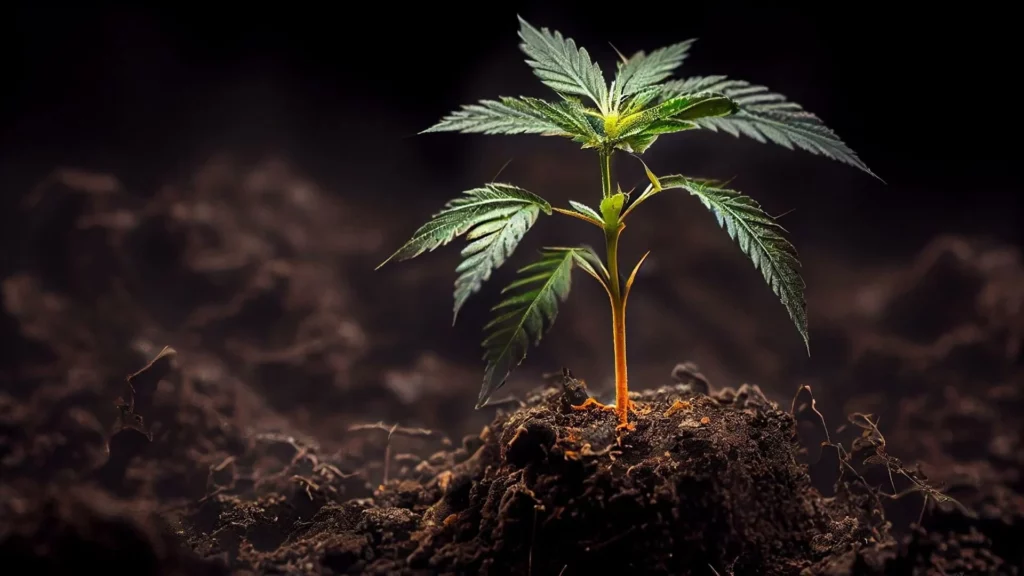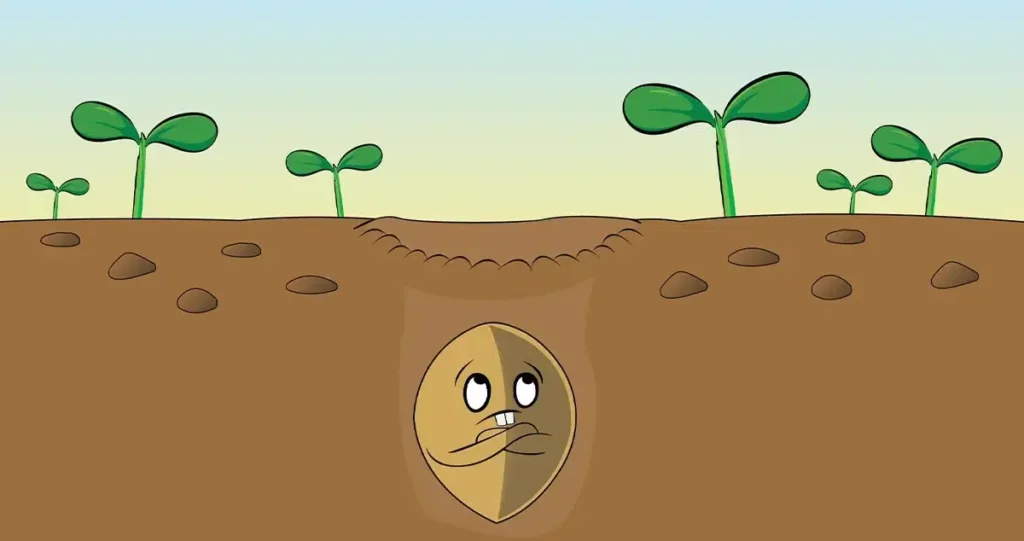Cannabis seed dormancy is a fascinating but often misunderstood phenomenon. While many growers expect their cannabis seeds to sprout quickly after planting, some seeds take longer to germinate than others. This delay can be confusing and frustrating, but it’s usually not a sign of failure. In fact, seed dormancy is a natural protective mechanism that ensures seeds only sprout under optimal conditions.
In this blog post, we will delve into the science of cannabis seed dormancy, explore the reasons why some seeds take longer to germinate, and provide tips on how to encourage the germination process.
What is Cannabis Seed Dormancy?
Cannabis seed dormancy is a state in which a viable seed does not germinate despite being provided with favorable environmental conditions, such as water, warmth, and oxygen. This is a natural adaptation that ensures seeds only germinate when the surrounding environment is suitable for survival. Dormancy allows seeds to wait out unfavorable conditions such as cold weather or drought and sprout when the chances of survival are higher.

Types of Seed Dormancy
There are two primary types of seed dormancy that may affect cannabis seeds:
- Innate Dormancy: This type of dormancy is built into the seed during its formation. It occurs when seeds need specific environmental conditions, such as temperature fluctuations, to trigger germination.
- Induced Dormancy: Sometimes, external factors can induce dormancy in seeds after they have matured. For instance, a sudden change in environmental conditions, such as exposure to extreme cold or drought, can cause seeds to enter a dormant state until conditions improve.
Understanding the type of dormancy affecting your cannabis seeds can help you determine how to encourage them to germinate.
Why Do Some Cannabis Seeds Take Longer to Germinate?
There are several reasons why some cannabis seeds take longer to germinate than others. These factors can range from genetic traits to environmental conditions, each playing a role in how quickly a seed will sprout.
1. Seed Coat Thickness and Hardness
One of the most common reasons for delayed germination in cannabis seeds is the thickness and hardness of the seed coat. Some cannabis strains naturally produce seeds with a thick outer shell, which acts as a protective barrier. While this can help the seed survive in the wild, it can also make it difficult for water and oxygen to penetrate, delaying germination.
- How to Address: If you suspect that a thick seed coat is delaying germination, you can gently scarify the seed. Scarification involves lightly scratching the surface of the seed coat with sandpaper or a file to help moisture penetrate the seed more easily.
2. Immature or Old Seeds
Seeds that are harvested prematurely or have been stored for an extended period may exhibit delayed germination. Immature seeds may not be fully developed, while old seeds may have deteriorated, leading to reduced viability and slower sprouting.
- How to Address: Always ensure that you are planting mature, high-quality cannabis seeds. Store seeds in a cool, dark, and dry environment to maintain their viability over time.
3. Environmental Conditions
Environmental factors such as temperature, moisture, and light play a crucial role in cannabis seed germination. If these conditions are not optimal, seeds may remain dormant until the environment becomes more suitable for growth.
- Temperature: Cannabis seeds typically germinate best at temperatures between 70°F and 85°F (21°C and 29°C). If the temperature is too cold or too hot, germination may be delayed.
- Moisture: Seeds require adequate moisture to germinate. If the soil is too dry, seeds may not absorb enough water to break dormancy. On the other hand, overwatering can suffocate seeds and prevent germination.
- Light: While cannabis seeds do not need light to germinate, some growers find that exposure to the right spectrum of light after planting can encourage sprouting. However, too much light during germination can dry out the growing medium, causing seeds to struggle.
4. Genetic Variation
Cannabis plants, like all plants, have genetic differences that can affect how quickly they germinate. Some strains are naturally faster to sprout, while others may take a bit longer due to their genetic makeup. For example, some landrace strains, which are wild cannabis varieties, may have built-in dormancy mechanisms that cause them to sprout more slowly compared to highly cultivated hybrids.
- How to Address: Patience is key when dealing with genetic variations in seed germination. If you know that a particular strain tends to germinate slowly, plan your grow schedule accordingly.
5. Seed Dormancy as a Survival Mechanism
In nature, cannabis seeds have evolved to ensure that they only germinate under optimal conditions. This survival mechanism helps prevent seeds from sprouting during periods of extreme weather, such as winter or drought. For instance, seeds may need a period of cold stratification (exposure to cold) before they are ready to germinate. This process mimics the natural winter cycle and signals to the seed that spring, and favorable growing conditions, have arrived.
- How to Address: If you believe your seeds require stratification, you can simulate this by placing them in the refrigerator for a few weeks before planting.
How to Encourage Germination in Dormant Seeds
If you find that some of your cannabis seeds are taking longer to germinate, there are several methods you can use to encourage the process:
1. Pre-Soaking Seeds
Pre-soaking cannabis seeds in water for 12-24 hours before planting can help soften the seed coat, making it easier for moisture to penetrate and trigger germination. Be sure not to soak them for too long, as over-soaking can drown the seeds.
2. Using the Paper Towel Method
The paper towel method is a popular technique for germinating cannabis seeds. Simply place the seeds between damp paper towels, then store them in a warm, dark place. The moisture and warmth will encourage the seeds to break dormancy and sprout. Check the towels regularly to ensure they remain damp but not soaked.
3. Maintain Optimal Growing Conditions
Creating the right environment is crucial for germinating cannabis seeds. Ensure that the temperature is within the ideal range (70°F to 85°F) and that the growing medium is moist but not waterlogged. Use a humidity dome if necessary to maintain a consistent environment.
4. Scarification for Hard Seeds
As mentioned earlier, scarification can help seeds with thick or hard coats to germinate. Lightly rub the surface of the seed with fine sandpaper or a file to weaken the outer shell, making it easier for the seed to absorb water and oxygen.
Also Read : Cannabis Seeds in Canada: A Guide to Legality, Storage, and Germination
Conclusion
Cannabis seed dormancy is a natural and complex process that can sometimes lead to delayed germination. Understanding the factors that contribute to dormancy—such as seed coat thickness, environmental conditions, and genetic variations—can help growers navigate the challenges of germination and encourage faster sprouting.
By optimizing the growing conditions, using techniques like pre-soaking or scarification, and ensuring you have high-quality seeds, you can overcome the hurdles of seed dormancy and achieve successful germination for a thriving cannabis grow.
Whether you’re a beginner or a seasoned grower, patience and careful attention to detail will ensure your seeds break dormancy and start their journey to becoming healthy cannabis plants.

